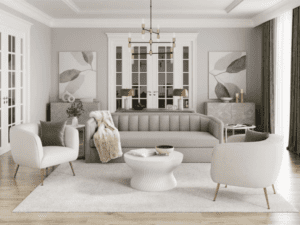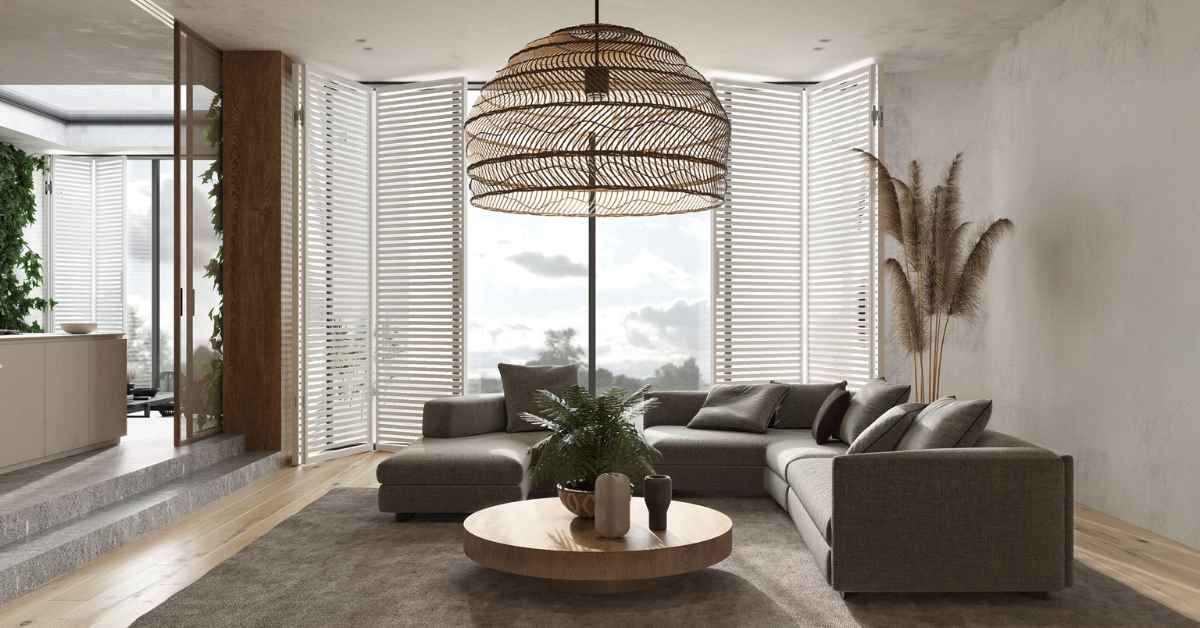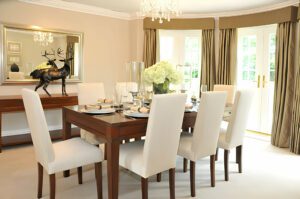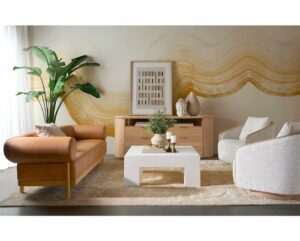

Sofa Shopping? 10 Must-Know Styles to Personalize Your Home
Are you looking for a new sofa? Then you’ve probably seen dozens of different styles and might feel overwhelmed. Finding the perfect sofa is not


Buying new furniture is an exciting project, finding the perfect piece to finish your design and giving it the final touch. But what if you can’t find what you’re looking for? You can’t find the right sofa design matching the right colour to make your living room come together?
A well-designed sofa can genuinely and completely transform the look and feel of your living room. It can tie together your aesthetic and make the room feel complete. It can either blend in or form a focus point.
Are you having trouble finding the right piece? There’s always customizing your sofa to match your needs. You can choose the perfect size, style, material and colour! Is it a daunting and complicated process? It doesn’t have to be. Designing your own sofa is fun!
Read on for 7 steps to designing a custom sofa for your living room and learn that it doesn’t have to be a complex ordeal!
Step 1 is like setting the stage for a play—you need to know what story you want to tell. Your living room is your personal canvas, and defining your style and aesthetic is crucial to creating a space that feels uniquely yours. It’s not just about picking pretty things; it’s about creating an atmosphere that resonates with you.
Start browsing online platforms, magazines, or Pinterest boards to gather inspiration. Pay attention to what catches your eye repeatedly. Is it the clean lines of modern design, the warmth of rustic charm, or the eclectic mix of bohemian vibes? Your preferences might also be a blend of different styles, and that’s perfectly fine.
Let’s break down a few common design styles:
Once you’ve identified your preferred style, it’s easier to decide, like choosing a sofa. For example, a sleek leather sofa might be perfect for a modern space, while a plush, fabric-covered one could enhance a bohemian vibe.
Remember, your style can evolve, so don’t be afraid to mix elements from different aesthetics. The key is to create a space that reflects your personality and makes you feel at home.
Step 2 is where we get down to the nitty-gritty—measuring. It might not sound glamorous, but it’s the foundation for ensuring your custom sofa fits like a glove in your living room. Accurate measurements are the unsung heroes of a well-designed space.
A custom sofa that fits perfectly, looks better and functions better. It should complement your space without overwhelming it or feeling lost. Measurements help you plan the layout efficiently. You wouldn’t want a sofa blocking pathways or making the room feel cramped. It’s critical to ensure the size of your sofa in relation to the room and other furniture matters. It’s all about achieving that harmonious balance.
Measure the length and width of the room. Note any alcoves, niches, or architectural features affecting furniture placement.
Identify the main pathways and leave enough space for easy movement. Aim for at least 18 inches of clearance around furniture.
Measure existing furniture you plan to keep. This helps you decide if your new sofa will complement or overpower the other pieces.
If you’re adding other furnishings like a coffee table or side tables, consider their dimensions and how they’ll work with the sofa.
Measure the dimensions of doorways and windows, and consider how the sofa will fit during delivery.
Sketch a simple floor plan. Place your existing and potential furniture in different arrangements to find the most optimal layout.
Whether you have any idea about making a custom sofa, use a tape measure. We know it sounds obvious, but using a tape measure and not just eyeballing it ensures precision, and you want to avoid getting your sofa and then it just does – not – fit. Measure twice, cut once—or, in this case, order once. Double-checking avoids costly mistakes.
If you have your heart set on a specific sofa style, make sure it’s the right size and comfortable for the space. By taking the time to measure accurately, you’re setting the stage for a living room that not only looks great but feels just right. And who doesn’t want that?
Also Read: 6 Reasons To Choose A Sectional For Your Living Room
Step 3 is like choosing the lead actor for your living room—it’s got to have the right presence. Let’s dive into the world of sofas and explore the different types, their pros, and cons so you can cast the perfect piece for your space.
Unlike a sofa, sectionals are not just one piece but comprise anywhere from two to four and must be connected. Alternatively, they can be configured in different ways to customize the layout or adapt it for special occasions.
Sectionals are very versatile. They are great for large spaces and can be configured in various ways to suit your room layout. Their size makes them ideal for big families or those who love entertaining. They can also help you define different zones in an open-concept living room.
On the other hand, they might be too bulky for smaller rooms, and placement can also be a bit restrictive while maintaining the room’s flow.
A loveseat is a small sofa for two people, perfect for smaller living rooms or as a complement to a larger sofa. A loveseat is ideal if you don’t feel like getting lost on a big sofa but are looking for a more intimate seating arrangement.
This pro also can turn into a con if you frequently host large gatherings, so if you have family or friends over, you may need additional chairs for a complete seating solution.
As the name suggests, a sleeper sofa is a hybrid piece of furniture that can be converted from a couch to a bed. This dual functionality makes it perfect for guest rooms or small apartments where space is at a premium. It gives you the convenience of providing an extra bed without needing a separate guest bed.
They are not without drawbacks, however. Some may find the mattress less comfortable compared to a regular bed. In many cases, they also can be considerably heavier and more challenging to move around.
First and foremost, consider Your Space. Loveseats or regular sofas might be more practical for smaller rooms, while sectionals work well in larger areas. A sleeper sofa might be a wise investment if you frequently host guests. A loveseat could be the perfect cozy spot if it’s just you and a partner. Your lifestyle matters. Do you prefer lounging on a big sectional or snuggling up on a loveseat?
The shape and layout of your room should guide your choice. A sectional might not work well in a narrow space, for example. Most types of sofas come in various styles. Consider how the design fits with your aesthetic.
Step 4 is where we get to touch and feel the story of your sofa—literally. Let’s explore the world of upholstery materials, from the smooth embrace of leather to the cozy comfort of fabric and the practicality of microfibre.
Leather is often considered a superior material as it is very durable and resistant to stains. It is wipeable and low-maintenance but requires regular conditioning to keep it pristine. It is also prone to scratches with sharp objects (or pet nails and claws). The comfort will vary as it can feel sticky in high humidity and temperatures or initially feel cold during winter, but it warms to your body temperature. The quality and comfort will also depend on the type of leather.
Fabric is the most versatile of materials as it comes in a wide variety of types and styles, from traditional linen over smooth velvet to corduroy and everything in between, not only giving you many different comfort levels but also aesthetic options, not even talking about the sheer multitude of colours. The durability varies depending on the type of fabric, and synthetic materials may last longer than natural ones. While stain-resistant options are available, fabrics often require more care and attention. Some sofas come with removable, washable covers, which is a plus.
If you’re looking for a compromise between leather and fabric, microfibre might be a practical choice. It is resistant to stains and wear, often wipeable and even machine washable, and offers a soft, comfortable feel.
Choosing the perfect material can be overwhelming, given the countless choices, so there are a few points to consider. Durability and stain resistance might be a priority if you have little ones or furry friends. Similarly, if you love hosting gatherings, easy-to-clean materials are a lifesaver.
Leather can be temperature-sensitive. Consider how it will feel in extreme climates in different seasons, while fabrics will generally give you the same feel year-round. Also, consider the texture and colour options each material offers. What complements your overall design? Do you want it to blend into the overall aesthetic, or do you want a statement piece that stands out?
Leather tends to be pricier than fabric or microfiber. Consider your budget while keeping in mind long-term durability. Another factor to consider is how much time you are willing to spend caring for your sofa. Some materials require more attention than others.
Step 5 is like choosing the paint for your canvas—it sets the mood, tells a story, and ties everything together. Let’s delve into the world of colour and patterns to ensure your living room is a masterpiece.
The colour and pattern of your sofa will significantly impact your living room, so it’s critical to consider your options carefully.
First off, which mood are you looking for in your living room? Warm tones, like reds, oranges, and yellows, create a cozy and energetic atmosphere, whereas the cooler tones of blues, greens, and purples evoke calmness and tranquillity.
The colour also can make a big difference in how big your room is perceived so that you can play with this as well. Lighter colours make a room feel larger and more open, which is an excellent choice if you have a small living room and want to make it look less crowded. On the other hand, dark colours can add a sense of intimacy and make a space feel smaller.
As mentioned above, the colour can significantly change the feel of your living room, but patterns can have just as considerable of an effect. If you want to make a statement, choose a bold design but balance it with more neutral elements. If you want a more subtle approach, choose a finer pattern that can add interest without overwhelming the space.
Within the realm of colours, many factors can influence your choice and lead you in opposite directions.
You can either coordinate or contrast. To coordinate, choose colours that complement existing furniture and decor. If you want to go down the other route, introduce pops of colour that contrast with the dominant tones for visual interest.
The room function plays another vital role. Consider calming tones for areas where you relax and unwind, but use vibrant colours in spaces where energy and activity are welcome. Playing into this, also consider how much natural light the room gets. Darker colours work well in well-lit areas.
Colour psychology also can help you select the right colour for your sofa.
Finally, the pattern itself can help you define your sofa and your entire living room. You can combine large and small patterns for balance. If using multiple patterns, ensure a cohesive colour palette to tie everything together.
Ask yourself, what is your style? Choose clean lines and geometric patterns for a modern look. Embrace vibrant and eclectic patterns for a bohemian atmosphere or more traditional and timeless patterns to stay classic.
But the sofa fabric is not the only option you have to play with patterns. Consider throw pillows that are easy to switch out for a quick style update. Or ground the space with rugs and introduce designs without overwhelming.
Step 6 is like adding bonus scenes to your sofa story—custom features that elevate the experience. Let’s explore the world of personalized touches that go beyond just sitting.
There are many custom features to choose from that can take your sofa to the next level.
If you are strapped for space, consider built-in storage. Store extra blankets, pillows, or board games in your sofa. Not only if you have a smaller space, this can keep clutter at bay, maintaining a clean look. If you don’t have space for a guest room, a sofa bed can instantly transform your living room into a guest room when needed. Especially for smaller homes, this can be a very practical solution.
When looking for ultimate comfort, take relaxation to the next level with built-in recliners, making your coach perfect for movie nights or simply kicking back after a long day. Or add adjustable headrests, allowing you to tailor the support to your liking. They can also add a sleek and contemporary touch.
Custom features can help your sofa adapt to different needs, making your living room versatile. Especially if you have a smaller home or studio apartment, built-in storage or a sofa bed can help you make the most of limited space and make every inch count.
Once you start looking, you’ll find that customizable options are more readily available than you may think. Many furniture stores offer customization options. Check with your local retailers or online shops. Many online platforms, like Urban Accents Furniture, allow you to customize various aspects of your sofa (and more), from fabric to features.
If you want a truly unique piece, look out for customized furniture designers and local artisans who may offer custom furniture services. While these may be the most expensive options, it is worth considering.
Your budget is one of the most important things to remember, as the prices for customized sofas can vary wildly. Identify the most important features to you and allocate your budget accordingly. You also can see custom features as a long-term investment, adding value to your daily life.
Step 7 is like the grand finale—the moment you bring your vision to life. But before the curtain falls, let’s talk about budget and putting the finishing touches on your custom sofa masterpiece.
As mentioned, custom sofas will cost you more than regular off-the-shelf options, so it’s even more critical that you determine a reasonable budget you are comfortable with and be prepared to stick with it. The temptation is big to throw financial reason to the wind when you fall in love with a design, so setting a budget is a big step to ensure you don’t overextend yourself. Prioritize which customization aspects are the most important to you and allocate your budget accordingly. Within reason, consider your sofa as an investment. Quality custom pieces may cost more upfront but can offer durability and satisfaction in the long run.
The cost for customization options varies depending on the feature type you are looking for and can range from a hundred to a few thousand dollars. When shopping around to get an idea for pricing, ensure detailed estimates that break out the cost for each customization to allow you to compare before making an informed decision.
If you’re uncertain about design choices or need assistance, consider consulting with an interior designer or seek advice from furniture experts at stores or online platforms. Request fabric or material samples to match your vision and existing decor. Sometimes, materials look and feel differently than they may seem in a picture.
Before finalizing your order, review all customization details to avoid surprises upon delivery. Clarify all terms to understand the delivery and installation process, especially if your sofa has unique features that may require special handling.
Identify must-haves and determine which features are non-negotiable for you. Don’t hesitate to explore creative and cost-effective alternatives that could get you the desired look. If you have found your perfect piece but can’t reasonably afford it, check into financing options. Some retailers offer this service if you’re working with a larger budget.
If you follow these seven steps, you’re on an excellent way to making an informed decision about a customized sofa. Find your style and aesthetic to get a good idea of what you’re looking for. Then, measure your available space to ensure that your new investment will fit perfectly. Choose the right sofa type and perfect material with a colour and pattern. Consider any custom features you might be interested in, and finally, get the financial side figured out and order your brand-new sofa.
A custom-made sofa gives you complete control over the type, colour and pattern to perfectly match your design and needs, making it a worthwhile investment for your living room. If you are curious now and want to design a custom sofa, Urban Accents Furniture offers a wide variety of custom sofas and sectionals to find your dream sofa.
Family-owned and locally operated since 2002, Urban Accents Furniture is your destination for high-end furniture for affordable prices. With a wide range of custom furniture, like customizable beds and headboards, sofas and custom sectionals, ottomans and benches, and accent chairs, you can find your perfect piece from the comfort of your home! Take advantage of our Canada-wide shipping to deliver your choice to your doorstep.




Are you looking for a new sofa? Then you’ve probably seen dozens of different styles and might feel overwhelmed. Finding the perfect sofa is not


When it comes to elevating the ambiance of your dining space, the choice of upholstery fabric for high-end dining chairs plays an essential role. The


Selecting the right living room furniture is crucial for creating a space that balances comfort, functionality, and aesthetics. Whether you’re furnishing a new home or




